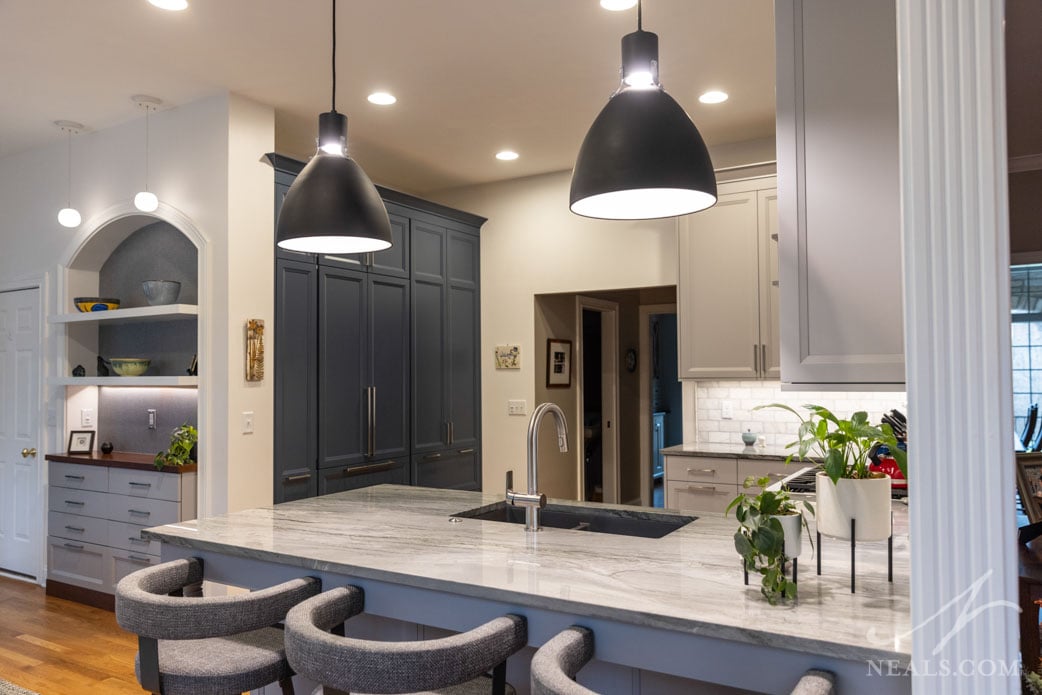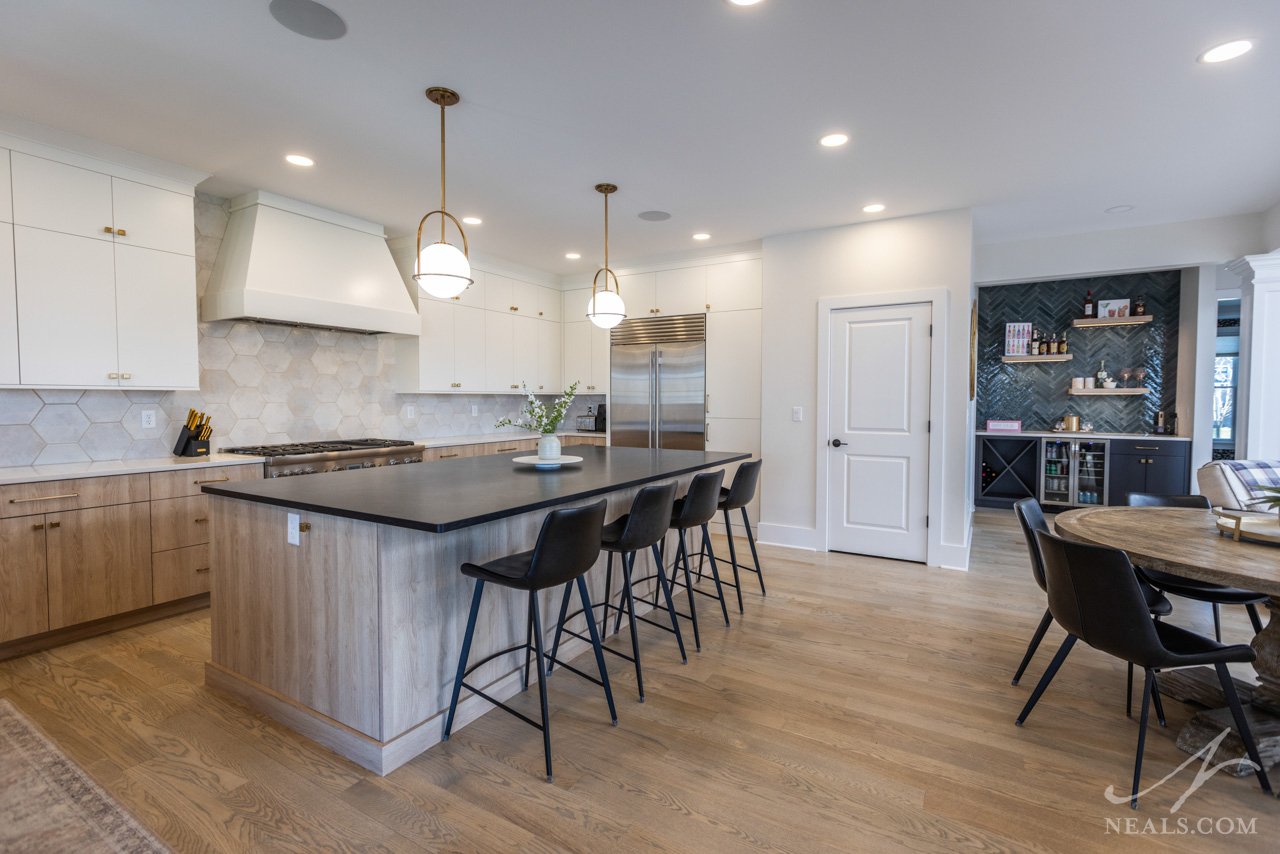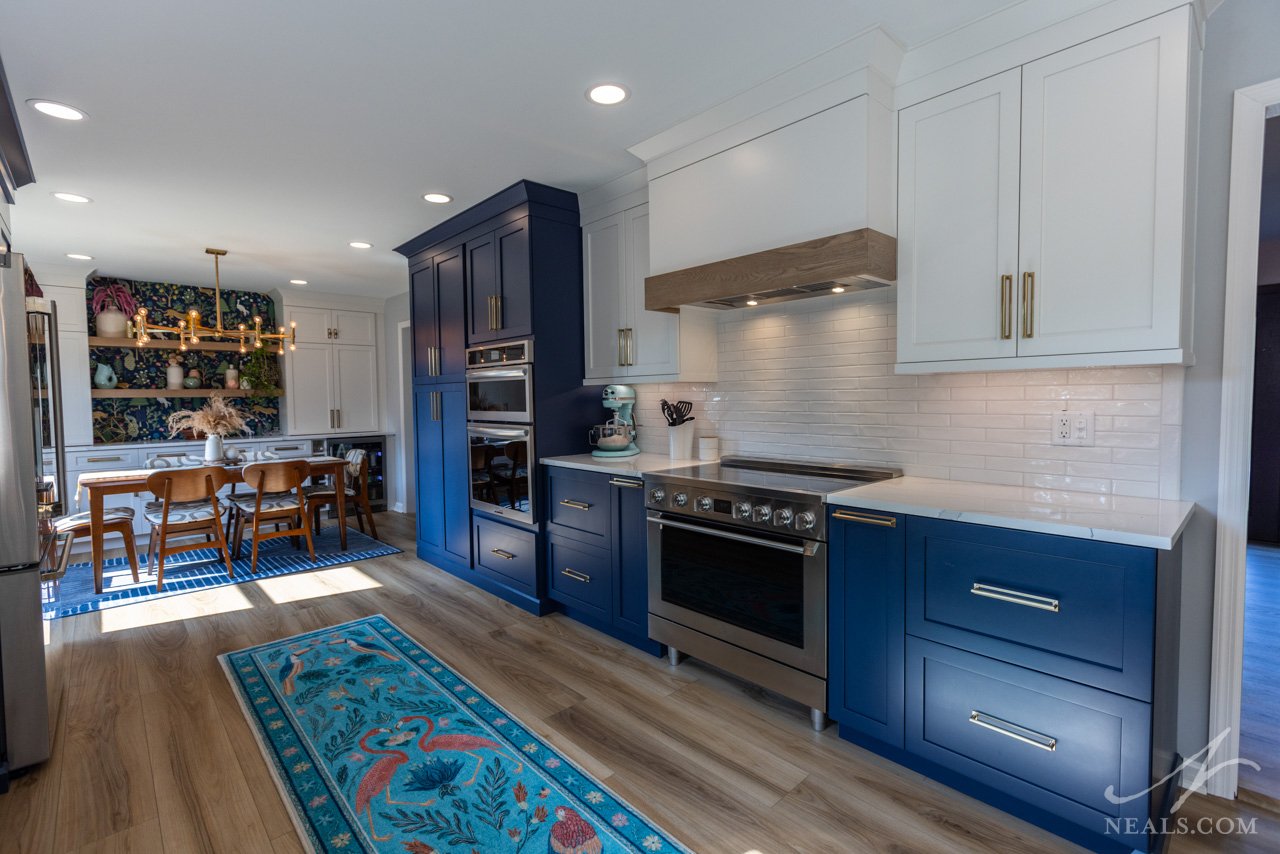In the ever-evolving world of interior design, one style often stands out for its timeless appeal and effortless sophistication: transitional design. Renowned for seamlessly blending classic elements with contemporary flair, transitional style has become the leading favorite among those seeking to create a kitchen with both a feeling of traditional familiarity and modern appeal. Though transitional style is broad enough to offer a huge range of unique customization from one kitchen to the next, there are still several key features that sets the style apart from truly traditional or contemporary spaces and makes it an ideal choice to consider for your kitchen.

Harmonious Fusion of Style
Transitional kitchens combine the classic elegance of traditional design with the sleek simplicity of contemporary aesthetics. This fusion creates a balanced space that feels both familiar and fresh. By selectively using elements from each end of the style spectrum, transitional kitchens will often have a vague old-world charm that you can sense in the space, but that’s been blurred by the carefully curated set of modern choices. A truly transitional space will often give you a comfortable feeling of nostalgia that you can’t quite put your finger on.

Neutral Color Palette
A hallmark of transitional design is the use of neutral colors, including hues of cream, beige, gray, and taupe, shades of blue and green, and medium to lighter toned wood. These timeless colors serve as a backdrop that allows homeowners to add in any variety of accessories and furnishings without overwhelming the space. The result is a kitchen that feels serene, inviting, and effortlessly sophisticated. Both traditional and contemporary style, by comparison, often rely on extremes or contrasts, preferring lights and darks rather than using mostly midtone shades. When you’re in a kitchen with grays or blues in the mix, chances are high that it falls into the transitional style category.

Clean Lines and Simple Forms
In keeping with its contemporary influence, transitional design style kitchens feature clean lines and minimalist forms. Cabinetry, countertops, and fixtures are often characterized by sleek, unadorned, or restrained profiles, lending a sense of understated elegance to the space. This emphasis on simplicity creates a visually cohesive environment that feels modern and refined. Often in these installations, it’s the materials themselves that do the talking since a transitional space will also favor pattern and movement in the same way a traditional kitchen would. Examples of this are the use of a marble-style stone for a waterfall counter or a hand-glazed subway tile for a backsplash.

Mixture of Materials
Another defining feature of transitional kitchens is the thoughtful combination of materials. From natural stone countertops to light-toned wood stains, transitional design embraces a rich variety of textures and finishes to add depth and visual interest to the space. This careful mixture of materials creates a layered and dynamic aesthetic that feels inviting and tactile. The is that these choices create a full, balanced design so that no single element stands out or apart. A well-designed transitional kitchen will feel like every individual choice that was made has a specific purpose in keeping the whole space in balance.

Practical Hardware and Appliances
Transitional design style is often formed out of a desire to bring practicality and versatility together. Often, hardware, plumbing fixtures, and appliances are chosen more for their practical utility than for any stylistic flair. That’s not to say they aren’t beautiful and stylish, but in order to keep the kitchen feeling transitional, they also shouldn’t steal the show. Farmhouse style sinks, sleek stainless-steel appliances, and understated drawer pulls will often feature in today’s transitional kitchens. The versatility of these choices allows homeowners to focus on the parts of their kitchen that will make the biggest visual impact (such as cabinetry, tile, and lighting), knowing that these tried-and-true elements will seamlessly fit in.
In essence, transitional design style kitchens represent contemporary sensibilities wrapped in a sophisticated package of traditional design principles. Whether you're drawn to the clean lines of modern design or the timeless appeal of classic aesthetics, transitional kitchens provide the perfect canvas for expressing your unique sense of style. With their harmonious fusion of old and new, these kitchens are sure to stand the test of time and continue to be a space you enjoy for many years to come.











